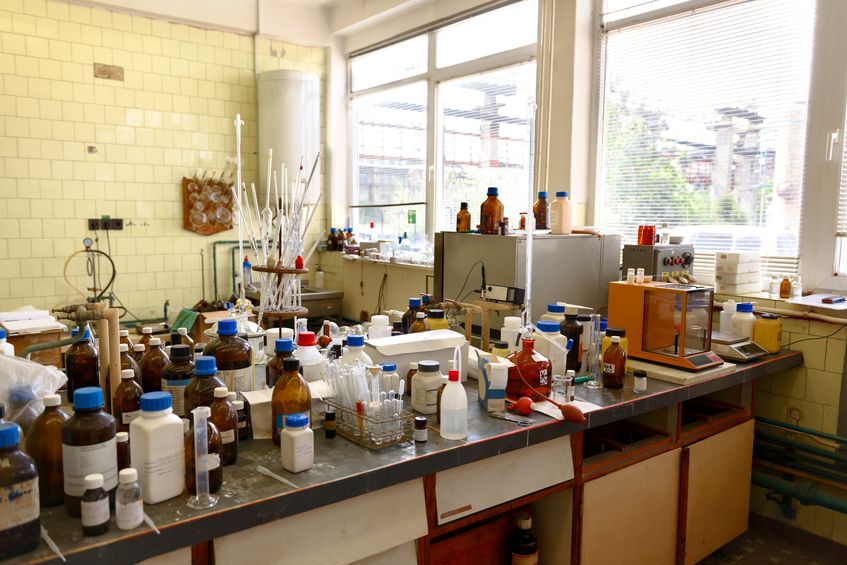It seems that all scientists have had that moment– the moment where you feel totally defeated by a machine. At some point in your day you will likely need to use some piece of equipment for experiments – incubators, shakers, microscopes, computers – and unexpected problems with these machines can not only be one of the most frustrating experiences in the day, but also potentially scarring. The following seem to be common on-going battles that we scientists face against machines.
Scientist vs. Thermocyclers
Thermocycles seem to always die out slowly. Who else has had a thermo-cycler that became defective in only a few wells at a time? It was always a guessing game which wells will go next. Other thermocyclers, with time, only continue to run half the saved programs or never completely cool to the holding temperature. In my lab we had three machines, each slightly defective in its own way.
Scientist vs. The centrifuge
How often has the centrifuge turned off mid-spin, locking your samples inside? Once you finally open the lid and liberate your samples, it may have taken too long, or they may be so damaged from removal, that the experiment must be tossed and re-started. Other times, the centrifuge likes to dislodge the tops of your eppendorf tubes in the middle of a mini-prep spin. Let’s hope you labeled both the tops and sides to rematch them post-spin. Otherwise the centrifuge wins.
Scientist vs. Alarms
We have all walked into a room where something is beeping, without knowing what it is. It could be a freezer, incubator or just a general thermostat alarm. The trick is finding the alarm before whatever the problem is causing the beeping destroys your samples, cells or experiment or you do not lose it from the beeping. Whichever comes first...
Scientist vs. Shakers/rotators
If you work in an older lab space, most of these machine-related challenges likely come from decade-old equipment that have now decayed. Consider the shaker that only continues to shake half the time when you close the door. As the instruction manuals are likely so old that they have turned yellow and crusty and this machine is no longer sold (perhaps the company is even out of business) there is no hope to fix it. Further, as these shakers are very expensive, the lab ultimately just decides to accept this as part of the old equipment charm. Even newer equipment such as rotators sometimes get stuck at an awkward angle, funneling the liquid into one corner of the dish and drying out part of your sample. Such an unpleasant surprise!
Scientist vs. The -80C freezer
For some reason the -80C freezer seems to fail just when you reach home after a long day and a tiring commute or smack in the middle of the weekend. Your plans have now been cancelled.
Scientist vs. Cell culture hoods
Apparently there are cell culture hoods that randomly shut off the air-flow while you are in the middle of working, rendering the environment no longer sterile. These are likely older hoods, however, that old equipment charm seems to lose its appeal once your cells become contaminated.
Scientist vs. Sectioning machines
It seems that hours are spent trying to set up the cryostat properly only to get a few tissue sections. You then often have to reset it all or to let it cool down sufficiently as 30 seconds of the sash being open was just too much for the cryostat to handle. The alternative, paraffin sectioning, also has its challenges. Who else has placed perfect sections on the drying box, only to have them melt into unrecognizable structures?
Scientist vs. Western blot transfer apparatus
The elusive western blot transfer. The trick is often in wooing the transfer apparatus itself — in the hope that this time the apparatus does not overheat to melt your membrane, to start a fire or that it doesn’t randomly stop somewhere in the middle of the transfer. I never thought my degree would make me such an accomplished wooer, I guess I have the transfer apparatus to thank for that.
Scientist vs. Microscopes
Who has not felt lost in trying to work a complicated microscope? Steps for working with confocal microscopes tend to be outlined well, but some basic bright-field/epifluorescence microscopes have so many nobs, filters, and buttons that it can take half an hour to figure out why the light is not being emitted through your sample. Never mind the imaging software or the fancy IT set-up to spread out storage space. Where did those instructions go...
Scientist vs. Computer
I think we have all had the moment where our computer crashes and we have not saved our work. Ironically enough, it tends to be right before a grant is due, before presenting at a committee meeting, or before paper revisions are to be in. I guess they do say, “Timing is everything.”
Despite being on the losing side of many of these battles, the war is far from over!
Quartzy is the world’s No. 1 lab management platform. We help scientists easily organize orders, manage inventory, and save money. We’re free and always will be. Visit Quartzy.com or reach out at info@quartzy.com.
Interested in writing for The Q? Send us an email!
Share this:
Tags: career, laboratory, humor, lab equipment

Brittany Carson
I am a post doc at the Lunenfeld-Tanenbaum Institute in Toronto. I currently work on glioma, but have studied breast cancer, multiple myeloma and renal cancer, with a focus on cell-signaling pathways, translational regulation, the cell cycle and the cytoskeleton to develop novel biomarkers and therapeutic targets. My science journey has taken me through cell culture, flies, worms and mice and through many different techniques. I love photography (including microscopy), traveling and non-science reading.




